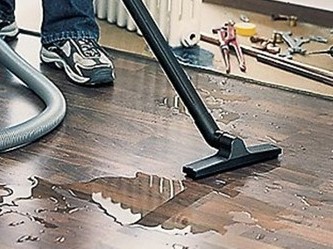
Water in Vacuum Cleaner? Here’s What to Do
Cleaners Talk is reader-supported. This post contains affiliate links, we may earn a commission at no additional costs to you. As an Amazon Associate we earn from qualifying purchases.
If you have accidentally vacuumed a small amount of water, switch the machine off immediately. Take each component apart and let them dry, especially the filter. If your vacuum is bagless, empty the dust bin and let it dry, otherwise, replace the vacuum cleaner bag with a new one. If the filters are not washable, replace them.
Can you get water in a vacuum cleaner?
Water inside a vacuum cleaner is a common problem. In fact, many people accidentally get water in their vacuum cleaners. Be careful when vacuuming the bathroom, around pet bowls, and in the kitchen area.
Is it safe to vacuum something wet?
Unless your vacuum is a wet/dry vacuum (Shop-Vac), it is not safe to vacuum something wet. The average vacuum cleaner is not meant to pick up anything wet — be it wet dog food or even a spill. Use a paper towel for small wet messes or a wet/dry vacuum (Shop-Vac) for large wet messes instead.
What happens if water gets into a vacuum cleaner?
You run the risk of being electrocuted and damaging the vacuum’s motor when water gets into a vacuum cleaner. Even if you avoid disaster, you’ll have to deal with the mess because the dust bag can potentially turn into a soggy mold farm. Unless your vacuum is a wet/dry vacuum (Shop-Vac), do not vacuum water.
What to do when water gets into a vacuum cleaner
Has water entered your vacuum cleaner? Don’t worry, it happens to the best of us. However, you need to be swift and know what to do when water gets into a vacuum cleaner. Here’s what you should do:
1. Turn the machine off immediately
If you have accidentally vacuumed a small amount of water, it is very important to switch off the vacuum immediately. Even if you’ve just picked up a small amount of water, you need to turn it off. You don’t want the moisture to circulate around the vacuum’s airflow, which can damage the motor or allow mold to thrive.
If your vacuum cleaner is corded, unplug the power cord from the electrical outlet immediately. Cut the power to avoid any risk or electrocution. If the cord is wet, you can turn off the electricity via the circuit breaker.
2. Empty the dustbin and let it dry
Once the machine is off, you would want to empty the dustbin and let it dry outdoors. You don’t want the liquid to stay inside the dustbin, which will encourage mold and mildew to grow inside.
Most modern vacuum cleaners, like Dyson upright vacuums, are equipped with a dustbin instead of a vacuum cleaner bag. This makes it easy to empty the contents straight into the trash can.
3. If the vacuum comes with a bag, replace it
If your vacuum cleaner utilizes vacuum bags, don’t reuse the bag. Throw it away immediately and replace the bag with a new one. There’s no point in reusing the bag as it is meant to be disposable anyway.
4. Replace the filters
The most important area to look out for is the filters. Not all (HEPA) filters are washable and can withstand water, so check with your vacuum cleaner’s brand. It is important to replace non-washable filters.
A vacuum cleaner’s filter is designed to ensure small and potentially harmful particles are trapped and do not recirculate back into the air. When the filter is wet, it cannot do a good job of filtering fine particles.
Remember, if the filters are washable, simply wash them and let them air dry before reinstalling. However, if the filters are non-washable, please replace them with a new one so your vacuum can work effectively.
5. Let everything dry before using the vacuum
Once everything has been taken care of, just make sure every component of your vacuum cleaner is dry before reinstalling. You do not want to use your vacuum with the slightest bit of moisture inside. Preferably, leave everything to air dry overnight. This will ensure everything is completely dry.
Key takeaways
Household vacuum cleaners are not designed to pick water and other liquids. Not only do you run the risk of electrocution, but you can also cause serious damage to the machine. Even if you avoid disaster, you’ll have to deal with the mess because the dust bag can potentially turn into a soggy mold farm.
To get moisture out of your vacuum cleaner, take it apart and let each component dry overnight. If the filters are non-washable, replace them immediately. Otherwise, let the filters dry before reusing.
If you need to pick up liquids, use a wet/dry vacuum, also known as a Shop-Vac. Some of the most powerful Shop-Vacs are relatively cheap and work wonders in cleaning up spills and puddles.
Related articles:
